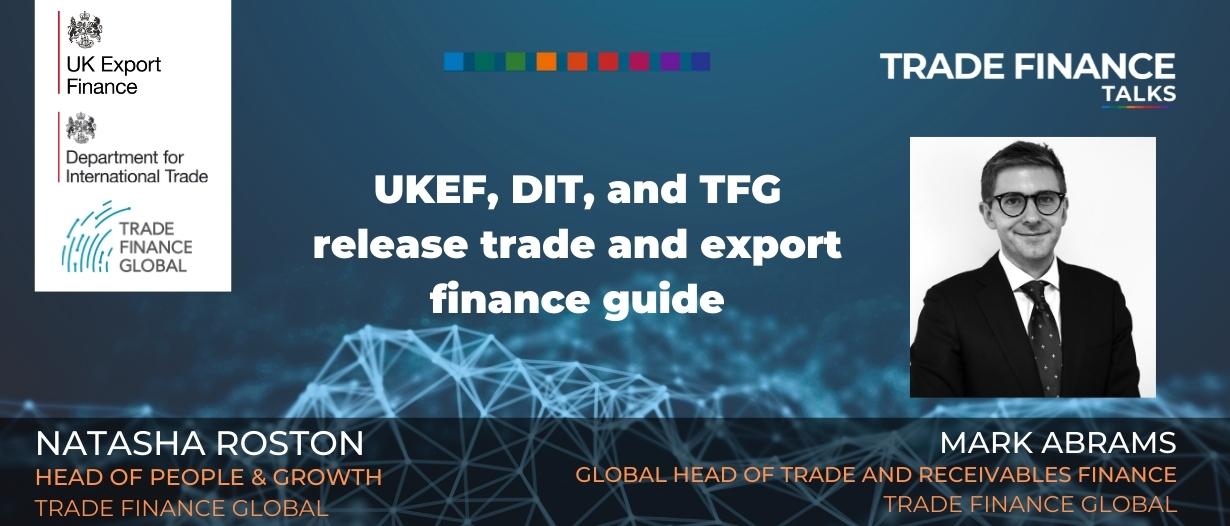Listen to this podcast on Spotify, Apple Podcasts, Podbean, Podtail, ListenNotes, TuneIn
Trade Finance Global (TFG) are delighted to announce the official release of a new trade and export finance guide in partnership with the Department of International Trade (DIT) and UK Export Finance (UKEF).
In order to gain more information on the guide, TFG sat down with Mark Abrams, global head of trade and receivables finance, at TFG.
The trade finance gap recently reached $1.7 trillion in 2020, showing no signs of lessening, with small- and medium-sized enterprises (SMEs) being disproportionately affected.
This new guide aims to disseminate the core pillars of the trade and export industry, to make information on this topic more readily available for those most disproportionately affected.
What is trade and export finance: how can this new guide help?
In order to gain greater insight into what the guide contains, it is first important to understand the wider international trading landscape.
International trade is the backbone of the economy, with 80% to 90% of cross-border trade needing financing.
In turn, trade and export finance gives companies the freedom to release working capital from their receivables or stock, allowing them to export to international markets.
Export finance
Export finance is an umbrella term for many different financing tools and instruments that businesses use when trading across borders.
More broadly, export finance facilitates transactions by providing importers and exporters with the funding they require.
The result: a minimising of gaps between placed orders and final payments, greasing the wheels of the entire supply chain in the process.
This newly released guide includes an overview of export finance’s most common risks, where to go through for actual real and practical help, and the current trade finance digitalisation landscape.
Also included is a glossary of industry terms, a look at the process involved in securing finance, and how trade finance can help.

How can SMEs benefit from this guide?
SMEs account for around 90% of all existing companies, generating more than half of the world’s jobs.
Despite their overwhelming presence, SMEs account for a staggering 40% of trade finance rejections––much higher than their share of applications.
Without the expertise or the know-how, the terrain can seem intimidating.
With this in mind, this guide showcases the many options available to SMEs, with the support of UKEF, DIT, and TFG.
A guide to the new trade landscape
The last 18 months have seen a host of major macroeconomic and geopolitical changes, creating food shortages, record inflation rates, and an energy crisis.
As a result, the trade finance industry has become shrouded in more risk, increasing uncertainty in global trade.
Knock on effects of this development has led to the increased need for financing from businesses and a decreased desire to provide finance from liquidity providers.
Given this complex and multi-faceted backdrop, this guide will hopefully be able to provide an anchoring reference to weather these stormy seas.
The future of trade and export finance
The trade finance landscape is rapidly evolving. While this provides exciting opportunities, it can often leave less experienced navigators of the market in the dark.
The instruments provided in the guide can therefore help exporters make informed decisions, taking into account all factors in today’s unpredicatble market.
The guide is a great resource and ungated. Those looking to find out more can do so on TFG’s export finance hub. The TFG website also provides an array of trade finance educational materials, including articles, podcasts, videos, and webinars.





























